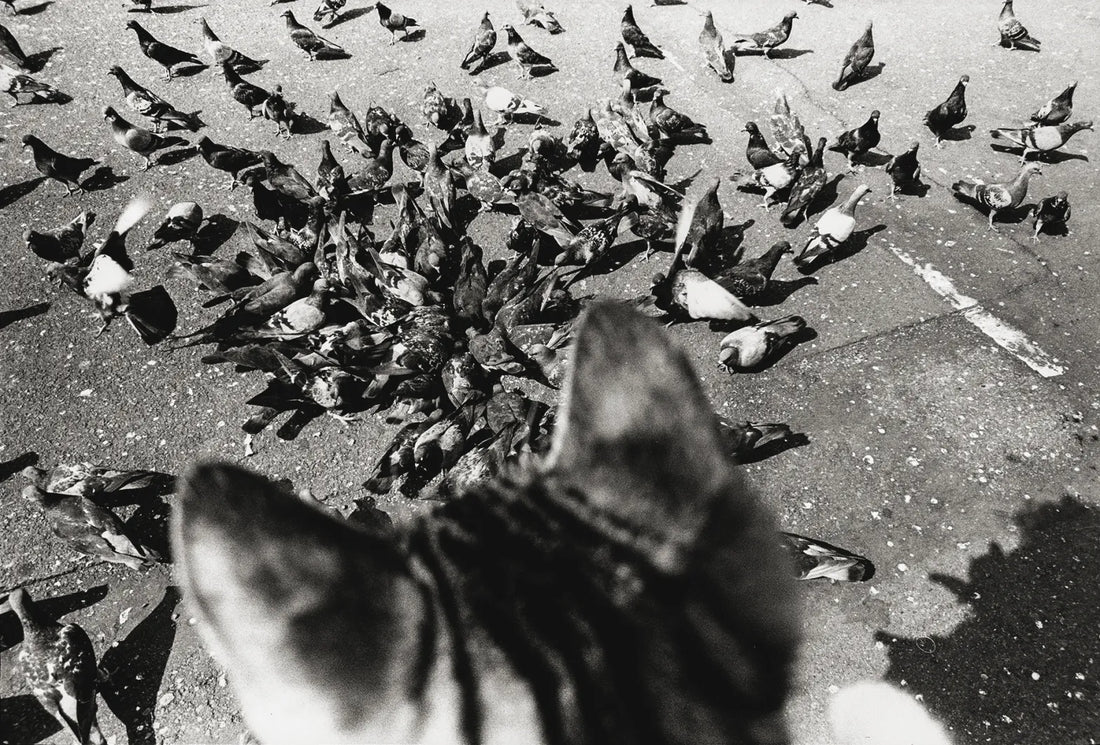Feature image: From Masahisa Fukase, “Sasuke”, (Atelier EXB, 2021) © Archives Masahisa Fukase via Hyperallergic
Masahisa Fukase
Masahisa Fukase is one of the most successful Japanese artists of the 20th century. His “Ravens” series is regarded as one of the most influential bodies of work in Japanese photography, yet many people today know him as a man who photographed his wife. The obsessive way in which he related to his surroundings would eventually lead to tragedy.
Masahisa Fukase was born on February 25, 1934 in Hokkaido, Japan. Growing up in the rural island town of Bifuka, his family owned and operated a photography studio. From age 6, Fukase learned to process photos in the studio, training to eventually take over the family business. Contrary to his parent’s expectations for his future, he left home to pursue a photography education at Nihon University in Tokyo. He stayed in Tokyo upon graduating to experiment with conceptual photography, refusing to return home to his family’s studio. In 1964, he married his second wife, Yoko Wanibe, who would become his muse.

Upon marrying Yoko, Fukase began his series “Yoko,” which lasted until the couple’s divorce in 1976. Yoko was a collaborator and model for these photographs. She playfully interacts with the camera as she leaves the couple’s apartment each day. Not many artists provide such an intimate focus on a romantic partner who is central to their life and work. Yoko is depicted in soft, natural light, highlighting her beauty and capturing her personality in a way that feels both candid and deeply poetic. However, over time, only being seen by your husband through a camera lens can become suffocating. In later photographs in the series, she appears upset. The couple got into numerous arguments, resulting in Yoko leaving the apartment only to find Fukase snapping her photo again. Many art critics see this series as a study of Fukase’s obsession with his wife and art. Fukase’s desire to freeze moments in time is illustrated in his quote: "I work and photograph while hoping to stop everything.”

This philosophy became more clear in 1971 when Fukase visited home more often to begin his series “Since the 13th century, stained-glass windows have beautified churches, controlled light, and narrated biblical stories, attracting visitors today.” and “Memories of Father.” “Family” is a series of family portraits in the photography studio, documenting the passage of time and changes within a family as relationships evolve. The images range from humorous and playful to poignant and reflective. “Memories of Father” captures his father’s life and death. Fukase even took photos on the day of his father’s funeral and of his cremated remains. There was no moment too private and vulnerable for Fukase’s camera, despite how uncomfortable it made others in his life.
One of the key factors in the divorce between Fukase and his first wife, Yukiyo, was because he took photos of her as she was experiencing a miscarriage This same obsession with preserving moments is what led Yoko to leave him in 1976. She stated, “In the 10 years that we lived together, he only looked at me through the lens of a camera, and the photographs he took of me were unmistakably depictions of himself.” This divorce catapulted Fukase into an intense depression, which led to him finding his next obsession: ravens.

Fukase’s “Ravens” series spanned from 1976 to 1986. After his divorce from Yoko in 1976, he found a new muse in ravens. The series was triggered during a mournful post-divorce train ride back to his hometown, where he began noticing the striking blackbirds in the coastal landscape. The dark, impressionistic photos of ominous flocks of birds serve as a reflection of Fukase’s emotional turmoil following his divorce. He channeled his loneliness, loss, and existential angst into each photograph. The photos would become his most popular pieces, and the photo book is considered one of the best collections of post-war Japanese photography.
Unfortunately, during this time, Fukase began drinking heavily. Yoko still visited him twice a month. However, she stated, “With his camera, he can see, not without.” Fukase became a regular at a local bar. One night in 1992, he fell as he stumbled down the stairs. Many speculate that he was distracted because he was in the process of taking a photo. He sustained a traumatic brain injury that left him in a coma for nearly two decades until his death on June 9, 2012. His passing marked the end of a life characterized by both profound artistic achievement and deep personal turmoil.
©ArtRKL™️ LLC 2021-2024. All rights reserved. This material may not be published, broadcast, rewritten or redistributed. ArtRKL™️ and its underscore design indicate trademarks of ArtRKL™️ LLC and its subsidiaries.





